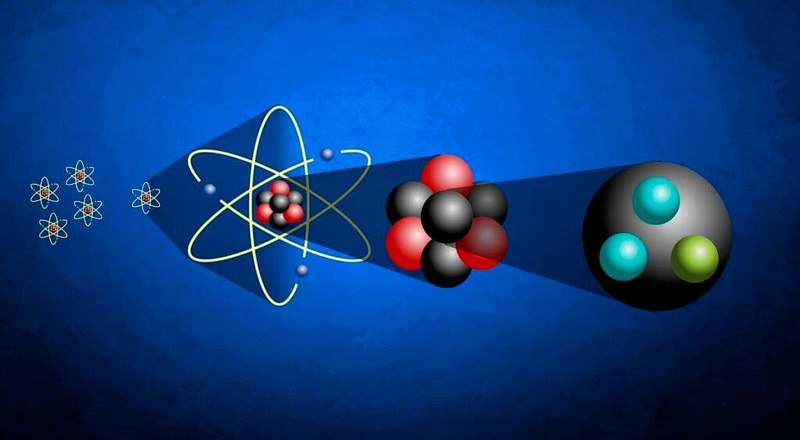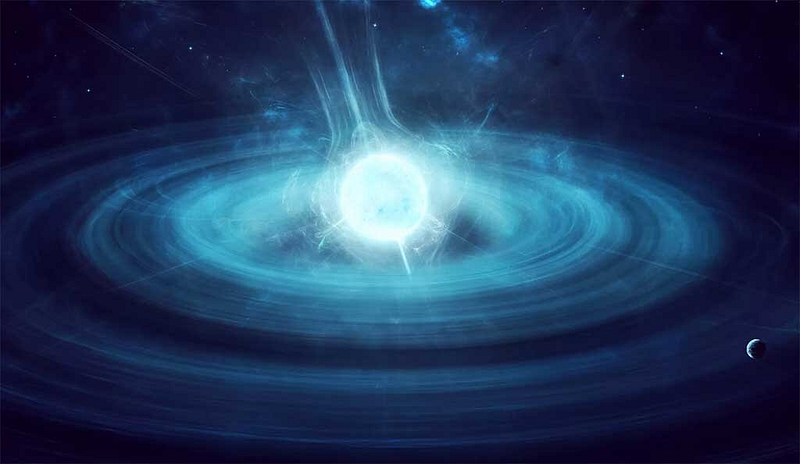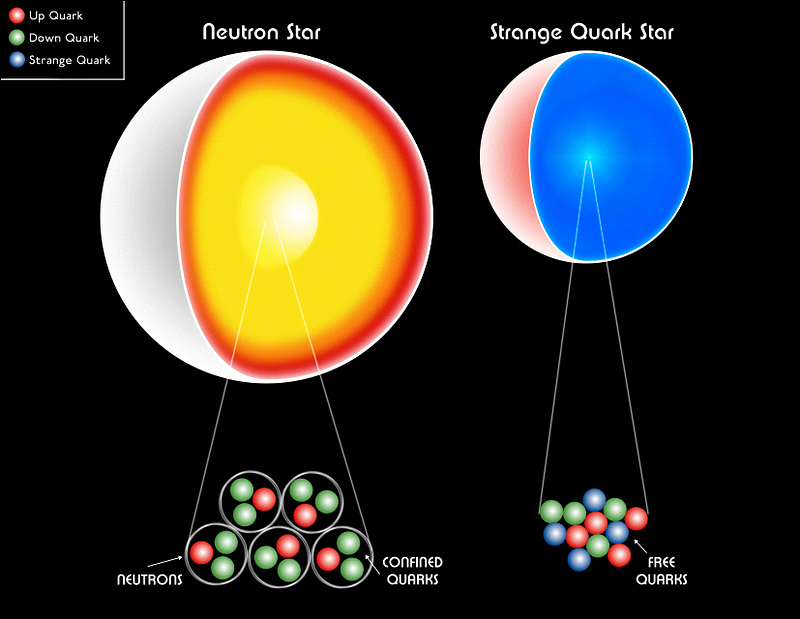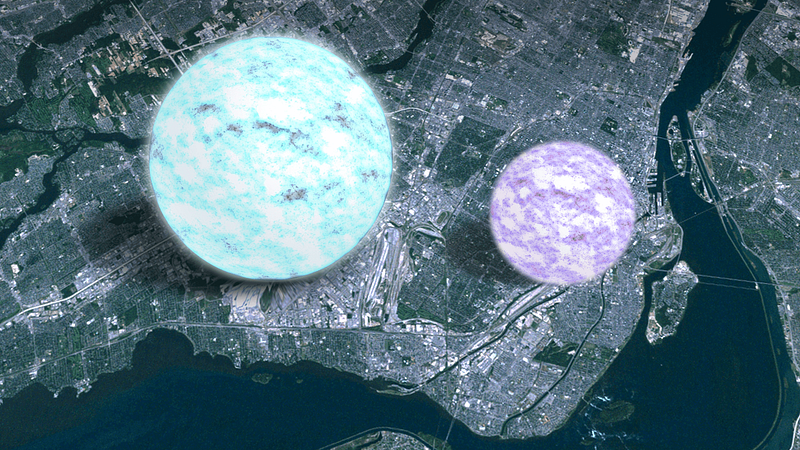# Exploring the Enigma of Quark Stars: Nature's Densest Entities
Written on
Chapter 1: What Are Quark Stars?
For a long time, neutron stars have been recognized as the most compact and dense celestial bodies in the universe, aside from black holes. However, theoretical calculations suggest that there might be even denser stars that are smaller in size yet possess greater mass. These intriguing entities are known as quark stars. What defines them, and how do they originate? Let’s delve into this mystery together.
Many individuals are familiar with the concept that all matter is composed of atoms, which contain a nucleus surrounded by electrons. The nucleus itself consists of protons and neutrons. However, the subatomic world extends further; both protons and neutrons are made up of even smaller particles called quarks.

Quarks are not typically found in isolation; they bond to form particles composed of multiple quarks. Yet, in the extreme conditions found within neutron stars, quark confinement can be disrupted, leading to a phenomenon known as quark deconfinement.
When a massive star reaches the end of its life cycle, it collapses into a neutron star, characterized by immense mass and a remarkably small size, often spinning at incredible speeds—sometimes making thousands of rotations each second. Estimates suggest that the upper mass limit for a neutron star ranges between 2.5 and 3 solar masses; beyond this threshold, the star may collapse into a black hole.

Quark stars are theorized to emerge from the most massive neutron stars, just before they transform into black holes. As these neutron stars gradually decrease their rotational speed, the centrifugal force weakens, allowing gravity to compress the core even more intensely. The extreme pressure and temperature in the core facilitate the breakdown of neutrons into quarks, resulting in the formation of quark matter. While this process may initially be confined to the core, under specific conditions, it could extend throughout the entire neutron star, converting all its matter into individual quarks. A star that undergoes this transformation is classified as a quark star.
During the transition to a quark state, the star experiences a significant contraction, with estimates suggesting a reduction in diameter by 1.5 to 2.5 times. Furthermore, this transformation is accompanied by a quark nova—an explosive release of energy that is predicted to be 100,000 times more powerful than a typical supernova, marking it as one of the brightest occurrences in the cosmos.

Currently, there is no definitive evidence confirming the existence of quark stars, although several candidates have been proposed. Their rarity is highlighted by calculations estimating that only two quark novae might occur each day throughout the observable universe. Observing already-formed quark stars poses significant challenges, and distinguishing them from neutron stars is even more complex.

If you're interested in exploring more about space, don’t forget to clap!
Subscribe to our channel and feel free to ask questions, which I’ll address in future articles.